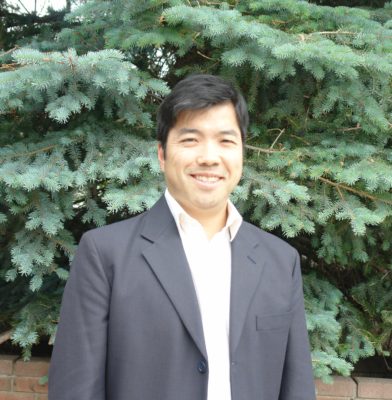 Associate Professor, History Department, University of Lethbridge
Associate Professor, History Department, University of Lethbridge
Professor Fujiwara was a Japan Foundation Doctoral Fellow from July 2010 to August 2011, hosted by Hirosaki University in Hirosaki, Aomori Prefecture.
I conducted extensive archival research on HIRAO Rosen (1808-80) and his peers of the Tsugaru group of kokugaku scholars, who were disciples of the late HIRATA Atsutane (1776-1843) and members of his academy. This doctoral fellowship enabled me to visit library archives, museums, shrines, and temples to gather and analyze valuable primary documents. During my stay I learned from specialists in Japanese history, networked with colleagues, and presented my research at conferences and seminars.
The year that my family and I spent in Japan was unforgettable. We enjoyed life in the city of Hirosaki, Aomori Prefecture, and have fond memories of the breathtaking cherry blossom viewing (hanami) by the castle and the spirited Neputa festival in the summer. We also remember living through the crises of 3.11 and the disasters endured by the people of Tohoku.
The fellowship had an immensely positive effect on Professor Fujiwara’s professor career.
The Japan Foundation Fellowship impacted my career immensely. It supported me as I conducted original research for my dissertation, which I have since rewritten as a book that will be published by Cornell University Press, Cornell East Asia Series in Spring 2021. Within a year of completing the fellowship, I was hired by the History Department at the University of Lethbridge, where I am now an Associate Professor and serve as Coordinator of Asian Studies — a program that colleagues and I co-founded.
Below are some of his publications that resulted from the Japan Foundation’s support.
From Country to Nation: Ethnographic Studies, Kokugaku, and Spirits in Nineteenth-Century Japan. Ithaca, New York: Cornell University Press, Cornell East Asia Series, Spring 2021.
“Channeling the Undercurrents: Fūsetsudome, Information Access, and National Political Awareness in Nineteenth-Century Japan,” The Journal of Japanese Studies, summer 2017 issue (Vol. 43, No. 2). 319-354.
“Rebirth of a Hirata School Nativist: Tsuruya Ariyo and His Kaganabe Journal,” Values, Identity and Equality in Eighteenth and Nineteenth-Century Japan. Eds. Peter Nosco, James Ketelaar, and Yasunori Kojima. Leiden: Brill, 2015. 134-158.
“Hirata monjin to shutaisei no mondai nitsuite: Tsuruya Ariyo to Kaganabe nikki wo daizai toshite,” Hokuo chiikishi no shinchihei. (“On Hirata Disciples and Individual Subjectivity: A Study of Tsuruya Ariyo and His Kaganabe Journal,” New Horizons for Regional History of Northeastern Japan) Ed. Hasegawa Seiichi. Tokyo: Iwata shoin, 2014. 217-243.
“Hirao Rosen cho Hirao Rosen kashū ni tsuite: (Honkoku) Hirosaki shiritsu toshokanzō Hirao Rosen kashū” (On Hirao Rosen’s Hirao Rosen poetry anthology: (Transcription) Archived in Hirosaki Municipal Library) Hirosaki daigaku kokugo bungaku (Hirosaki University Language and Literature Studies) Vol. 32 (March 20, 2011). 54-81.

